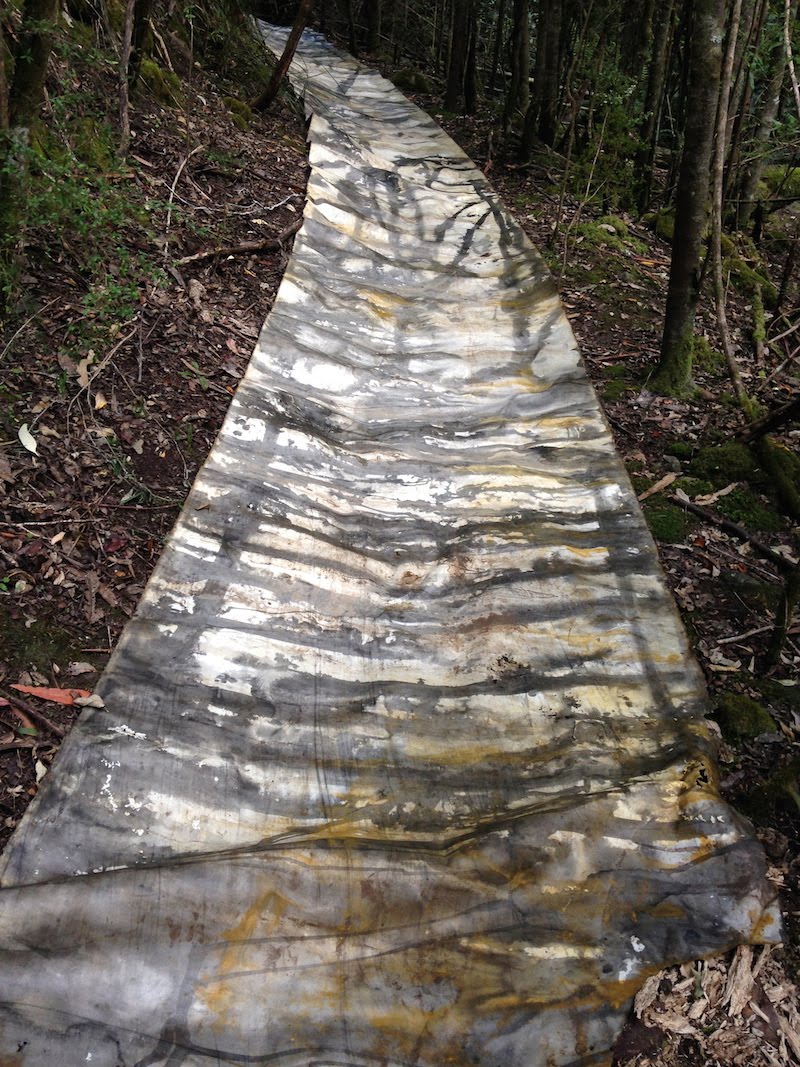Printmaking requires working on the horizontal as the matrix needs to be printed by an even flat pressure either by hand or by a press. This work was developed on the ground outside my studio and eventually hand printed in an adaptation of Japanese printmaking techniques. I am fascinated by the flip from the horizontal to the vertical that occurs when a work is peeled off the matrix. I often think of the space between matrix and paper in a similar way to the space between tree and shadow. It is a rich and fertile area that appears to stir the imagination. In my installations I like to maintain this tension by installing the matrix along with the print.
For me the shadows are the traces of time that shimmer across the surface of the land, revealing and concealing what lies beneath. As I walk around the common my shadow merges with those of the trees and the clouds and occasionally breaks free to be seen moulding itself to the undulations of the land. The ground affects the shadows making them into shape shifters, at times identifiable and at others a puzzle that may echo with a deeply held memory. These shifting forms were traced at a moment in time and made into woodcuts and printed onto Japanese paper. The shapes are part of an interconnected network of what is horizontal, vertical and in-betweeen.

